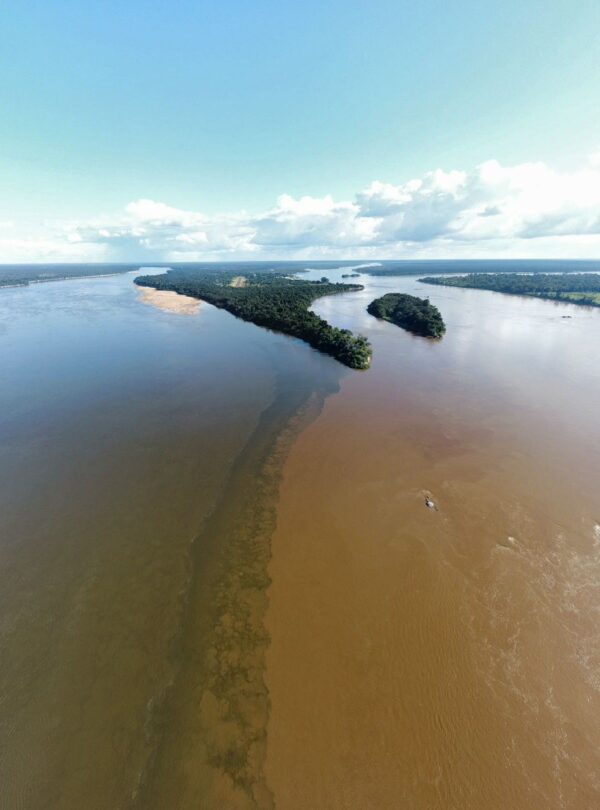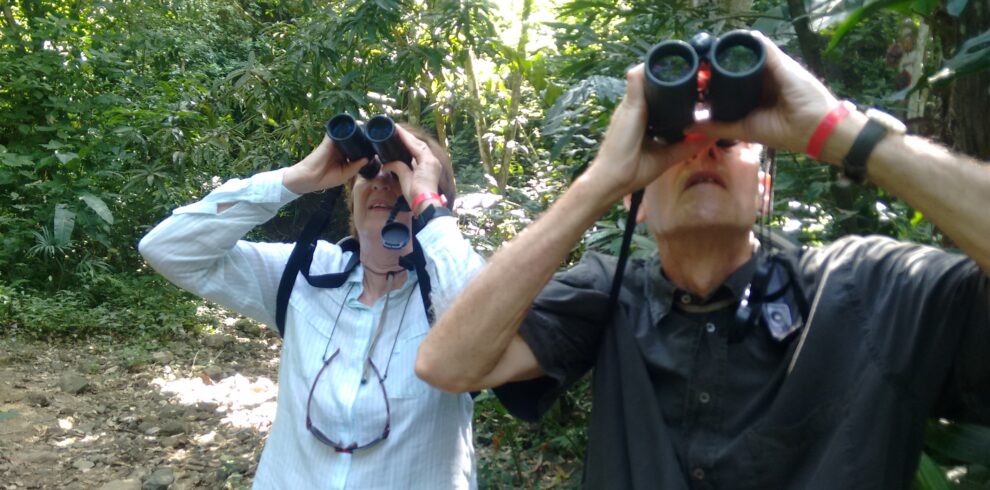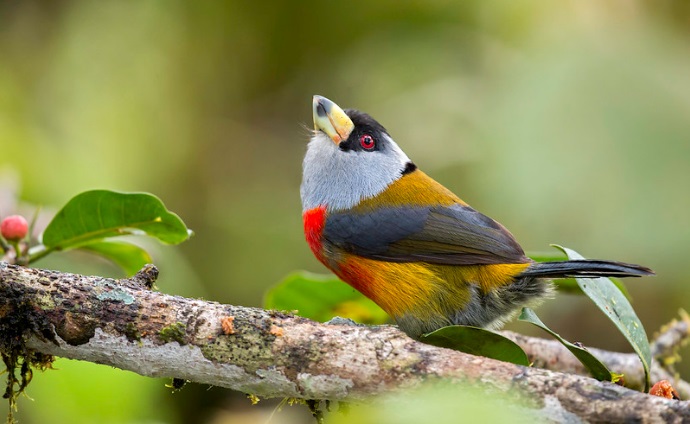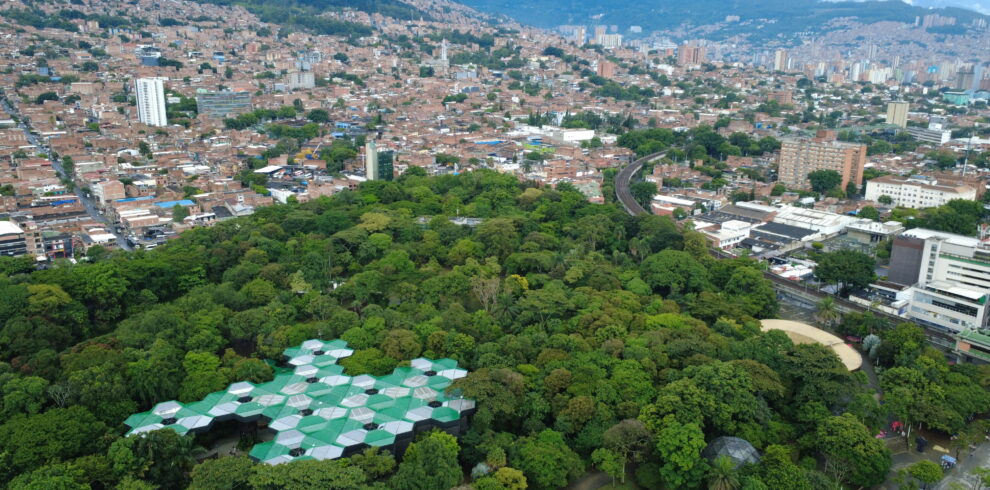Inírida is a region where Amazonian, orinoquense and guayanes source ecosystem meet, interweave by a water web, its physical, chemistry and biological characteristics answer to Andes sources guayanes shield and Amazonian plaint. This biodiversity of ecosystem generates and sustains a super diversity of species. So it is one of the most important places of conservation of the water area of Orinoco. Its overage temperature is between 24- 29 c in season of rain 26c, in dry time 34 is between 85 and 100 meters upon sea level.
Itinerary
This is a solitary road of white sands, medium size forest and some tall trees in portion of the path that goes to indigenous community, interesting birds to see: Spix ́s Guan (Penelope jacquacu), Pompadour Cotinga (Xipholena punicea), Least Nightawk (Chordeiles pusillus), Lafresnaye ́s Piculet (Picumnus lafresnyi), Chestnut woodpecker (Celeus elegans), Black Caracara (Daptrius ater), Common Scale backed Antbird (Willisornis poecilinotus), Red-throated Caracara (Ibycter americanus), Cherrie ́s Antwren (Myrmotherula cherriei) Yellow crowned Tyrannulet (Tyrannulus elatus), Black manakin (Xenopipo atronitens), Rufous crowned Elaenia (Elaenia ruficeps), Red shouldered tanager (Thachyphonus phoenicius), Pale Bellied Mourner (Rhytipterna immunda) and many more.
Probably one of the best places to see birds, is a road inside of a floated area, also a very tall forest. It has a good understory to see antbirds and other small birds, located within Indigenous territory belonging to Curripacos people.Interesting birds to see in this place definitely one of the very, very weird and not well known is the Capuchinbird (Perissocephalus tricolor) one of the species which we do not have enough information about their leks, but thanks to a dedicated work today we can enjoy it, see and listen this mystery bird; other important birds: Swallow winged Puffbird (Chelidoptera tenebrosa), Paradise Jacamar (Galbula dea), Amazonian motmot (Momotus momota), Gilded Barbet (Capito auratus), Golden -spangled Piculet (Picumnus exilis), Scale- Breasted Woodpecker (Celeus grammicus), Black Caracara (Daptrius ater), Black- headed Parrot (Pionites melanocephalus), Chetsnut- fronted Macaw (Ara severus), Amazonian antshrike (Thamnophilus amazonicus), Pearly antshrike (Megastictus margaritatus), Spot- backed Antwren (Herpsilochmus dorsimaculatus), Cherrie ́s Antwren (Mymotherula cherrie), Imeri- Warbling Antbird (Hypocnemis flavescens), Short- crested Flycatcher (Myarchus ferox), Olivaceus woodcreeper (Sittasomus griseicapillus), Brown- banded Puffbird (Notharchus ordii) and many more.
Other of the best places to birding just 10 minutes from the village upstream by the Inírida River, is a varzea forest with tall trees and perfect understory to antbirds, interesting birds to see include: Rose- Breasted Chat (Granatellus pelzelni), Little Cuckoo (Coccycua minuta), Blue- crowned Trogon (Trogon curucui), Collared Puffbird (Bucco capensis), Black- fronted Nunbird (Monasa nigrifrons), Green- tailed Jacamar (Galbula galbula), Orinoco Softtail (Thripophaga cherrie), Fasciated Antshrike (Cymbilaimus lineatus), Black- spotted Bare- eye (Phlegopsis nigromaculata) Dot- winged Antshrike (Sakesphorus canadensis), Varzea Schiffornis (Schiffornis major), Long- Billed Woodcreeper (Nasica longirostris), Bare- necked Fruitcrow (Gymnoderus foetidus), Slate-coloured Grosbeak (Saltator grossus),Lafresnaye ́s Piculet (Picumnus lafresnayi), Olive Oropendola (Psarocolius bifasciatus), (Bucco macrodactylus). Ending the trail we can see some Botos (Inia geofrensis) in Matraca Lake and enjoy the sunset and other species that inhabit the river bank.
This is a small river just 25 minutes from the village upstream by the Guaviare river and ends the river itself, the place is known for the agricultural activity and family of fishermen who live by the river, some birds: Rufescent Tiger- Heron (Tigrisoma lineatum), Great Egret (Ardea alba), Southern Lapwing (Vanellus chilensis), Wattled Jacana (Jacana jacana), Spotted Sandpiper (Actitis macularius), Black Skimmer (Rynchops niger), Yellow billed tern (Sternula superciliaris), Amazon Kingfisher (Chloroceryle amazon), Black fronted Nunbird (Monasa nigrifrons), White- eared Jacamar (Galbalcyrhynchus leucotis), Olivaceous woodcreeper (Siittasomus griseicapillus), Yellow- chinned Spinetail (Certhiaxis cinnamomeus), Drab- water Tyrant (Ochthornis littoralis), White- eared Jacamar (Galbalcyrhynchus leucotis), White- winged Swallow (Tachycineta albiventer), Red- capped Cardinal (Paroaria gularis), Festive coquette (Lophornis chalybeus), Blue and Yellow Macaw (Ara ararauna), Scarlet Macaw (Ara macao), and more.
His mystic place composed of a set of 3 mounds located 2 hours on boat from Inírida to south-western which is inhabited by two communities belonging to Puinave people this is other group of native people from Guainía, also is the home of fabulous legends, really it is a place of incalculable value.
Some interesting birds in this place: Capped Heron (Pilherodius pileatus), Golden Green woodpecker (Piculus chrysochloros), Greater Yellow- headed Vulture (Cathartes melambrotus), Sand- colored Nighthawk (Chordeiles rupestris), Amazonian Umbrellabird (Cephalopterus ornatus), Cliff Flycatcher (Hirundinea ferruginea), Red- necked woodpecker (Campephilus rubricollis), Riverside Tyrant (Knipolegus orenocensis), Plain- crested Elaenia (Elaenia cristata), Spangled Cotinga (Cotinga cayana), and more.
The Rincón de Vitina community located going to airport road the Inírida city, it is coming out on the way to the Cesar Gaviria airport, the tour will take you to the indigenous reservation, during the way of approximately few 25 minutes, you can look at the sides of the road immense savannas and catingas by the emblematic and endemic flower of the department: “Inírida flower” (Schoenocephalium teretifolium and Guacamaya superba) a endemic plant of incalculable natural value that also is a symbolic patriotic symbol of the municipality. Species of the area: White- naped Seedeater (Sporophila fringilloides), Green-tailed Goldenthroat (Polytmus theresiae), Savanna Hawk (Buteogallus meridionalis), Aplomado Falcon (Falco femoralis), and Wedge- tailed Grass- Finch (Emberizoides herbicola), Scale pigeon (Patagioenas speciosa), White- chinned Sapphire (Hylocharis cyanus), Brown Jacamar (Brachygalba lugubris), Rufous- tailed Flatbill (Ramphotrigon ruficauda), Cinereous Tinamou (Crypturellus cinereus), White-eyed Tody- Tyrant (Hemitriccus zosterops), Pompadour Cotinga (Xipholena punicea), Tropical Gnatcatcher (Polioptila plumbea) and more.
- Hotels during the entire stay at the destination
- Water transportation with river navigation insurance
- Private land transportation
- Full meals according to the diet of the pax
- All activities and services described in the proposal
- Contribution to the Indigenous Communities
- Personalized guide specialized in Amazonian nature and culture
- Guide specialized in bird watching












